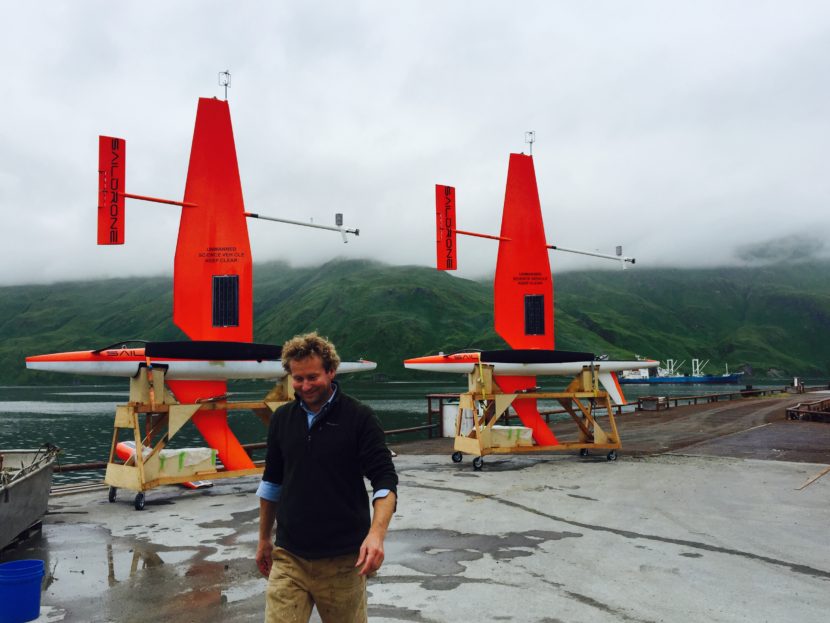
Orange drones were launched in Dutch Harbor last summer to measure sea ice retreat. Now Saildrones are back in the Bering Sea with a new mission and new features.
One of them is to record North Pacific right whale calls to help track its migratory patterns. There are only 30 North Pacific right whales in U.S. waters. The other new feature will help determine how many fur seals and pollock live in parts of the Bering Sea.
The pollock fishery there is the largest in the U.S.
“Is it going to be a winner or a loser over the next decade in terms of the effects of warming, ocean acidification and loss of sea ice?” asks Douglas DeMaster, a science director at the National Oceanic and Atmospheric Administration Alaska Fisheries division.
DeMaster says scientists are concerned about the fur seals, which feed on pollock, and the diminishing stocks of pollock.
“It’s something the fishery needs to plan for and adapt to. And the only way to do that is with good information,” DeMaster said.
In addition to testing the temperature, oxygen and salinity of the water, the Saildrone will also be using echo sounder technology. DeMaster calls it “a sophisticated fish finder.”
“It’s basically a ping, a sound impulse that’s sent through the water column and it’s reflected off of fish,” he said.
NOAA has used it on research vessels before but never on the Saildrone. Scientists will be able to sit from the comfort of their office or even in a coffee shop, as some of the data is collected in real time. In September, they’ll pluck the Saildrones out of the water when the season changes. They run off battery and solar power. It’ll take six months to a year before scientists can draw solid conclusions from the data.
Christopher Sabine, the director of NOAA’s pacific marine environmental lab, says pollock stocks have dropped before. The temperature of the Bering Sea warmed up in the early 2000s.
“Then it got cold again and the fish stocks came back,” Sabine said. “We’re now swinging back into a warm period again and we’re looking at potentially three years for this to manifest itself in the fisheries side of things.”
Since the Saildrone were launched two weeks ago, some startling information has already come back. Sabine says temps in the lower Bering Sea are about five degrees warmer than normal.
